Mystery Auto Foto #40 Solved: A 1924 Wasp Touring Car Built in Bennington, Vermont
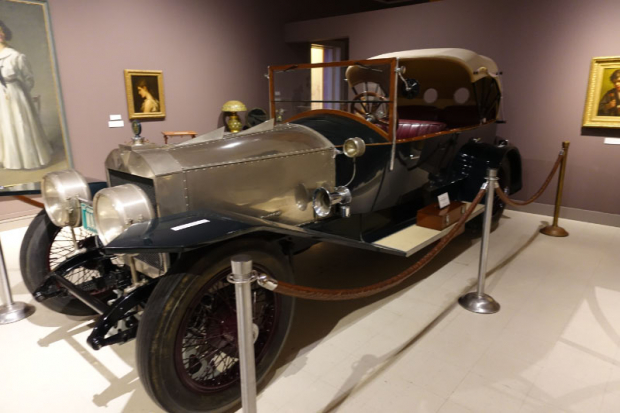
I recently found this weekend's Mystery Auto Foto in a museum dedicated to art and regional history.
Mystery Foto questions:
- Identify the touring car
1924 Wasp Touring Carbuilt by Martin-Wasp of Bennington, Vermont. One report believes this automobile was restored/re-created by Henry Marvin Dodge in 1953 using a rolling chassis and spare parts (see below Kleiner's Korner).
- Who owned this automobile?
Henry Marvin Dodge, who donated it to the Bennington Museum in 1982.
- Name the Hollywood star who purchased one of the touring cars for $5,500?
Douglas Fairbanks
- Where is this automobile located today?
The Bennington Museum in Bennington, Vermont.
The museum's object record reads as follows:
Date: 1925 (Note the label on the exhibit dates the automobile as 1924.)
Description: Designed and built by Karl Hamlin Martin of Bennington, Vermont. Model is Series B, body style, Rickshaw victoria, vehicle identification #1. Dark green body, off-white canvas top, chrome hood, red leather upholstery.
Information: Karl Martin realized an ambition of long standing when he produced the first Wasp touring car. Even while serving in the Naval Aviation Department during World War I, Martin pursued automotive design work and after his discharge from the Navy in 1919, he moved to Bennington where he began construction of the first group of six cars.
The first Wasp, barely completed in time of National Automobile Week in New York, was exhibited at the Commodore Hotel in January, 1920. It was received by the public with enthusiasm for its startling and unusual design and fine craftsmanship. Douglas Fairbanks Sr., upon seeing the car, bought one on the spot.
Spectacular in appearance, the Wasp was constructed of the finest materials and components available. A Wisconsin T head engine, such as powered the Stutz with a Bosch ignition, powered the car. A chrome nickel, heat treated frame on Timkin axles combined with Rudge Whitworth wire wheels gave the car strength, stability and speed. For the 1924 season a Continental six-cylinder engine of greater power was combined with a four speed transmission with overdrive which, on the fourth Speed, gave the car quietness and smoothness at even higher speeds. The coachwork was crafted in Bennington under the careful, direct supervision of Karl Martin.
As a result of monetary problems and slow sales due to a post war business slump, the company failed and the last Wasp, now displayed in The Bennington Museum, was produced in 1925. Although the company lingered on, producing custom woodwork and special castings, its doors closed permanently in 1932, a sad end to Vermont's first true automobile manufacturing company, the total production of which was only 16 cars. While only a small number when compared to the giants of the industry, it is quite creditable considering that many companies at the time produced only one or two cars.
Congrats to Dick Gorman, Greg O., Art Kleiner, Bob Swanson and Gary Hammond for identifying the 1924 Wasp located in the Bennington Museum. Kudos to Art Kleiner (see Kleiner's Korner) and Gary Hammond (see Hammond's Historical Happenings) for forwarding Martin-Wasp information and jpegs.
Enjoy,
Howard Kroplick
Closeups
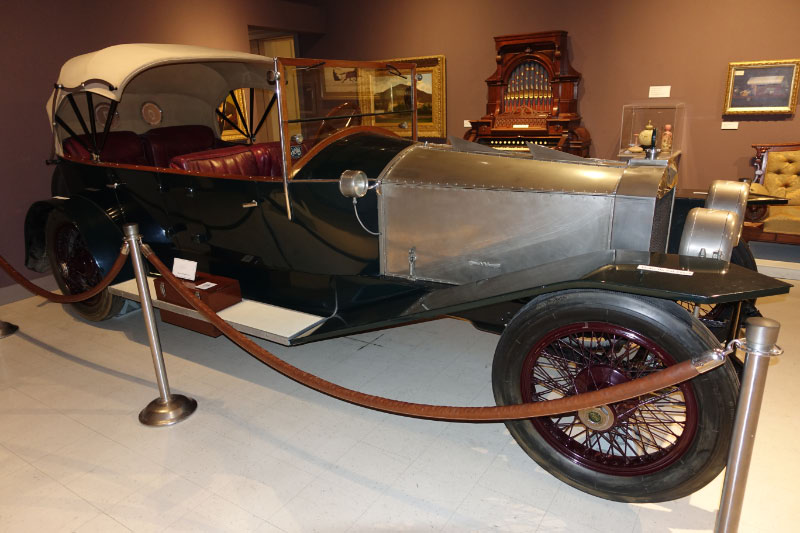
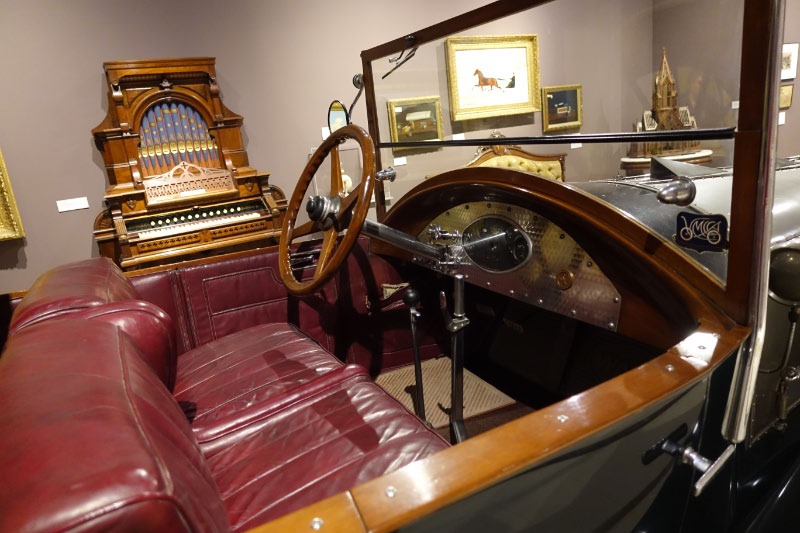
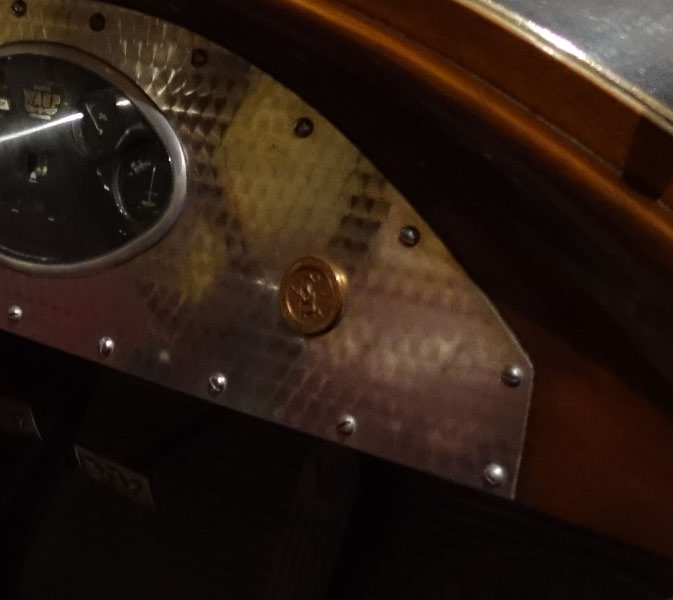
Hint: Each dashboard included a St. Christopher medal.
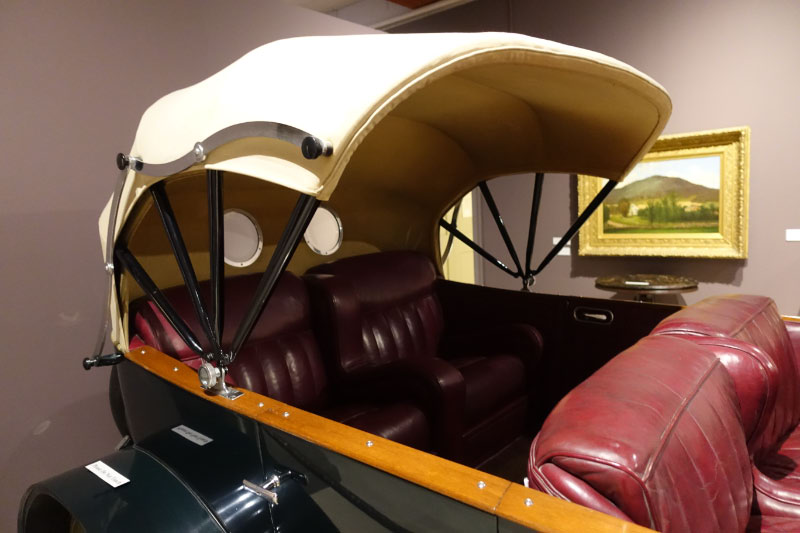
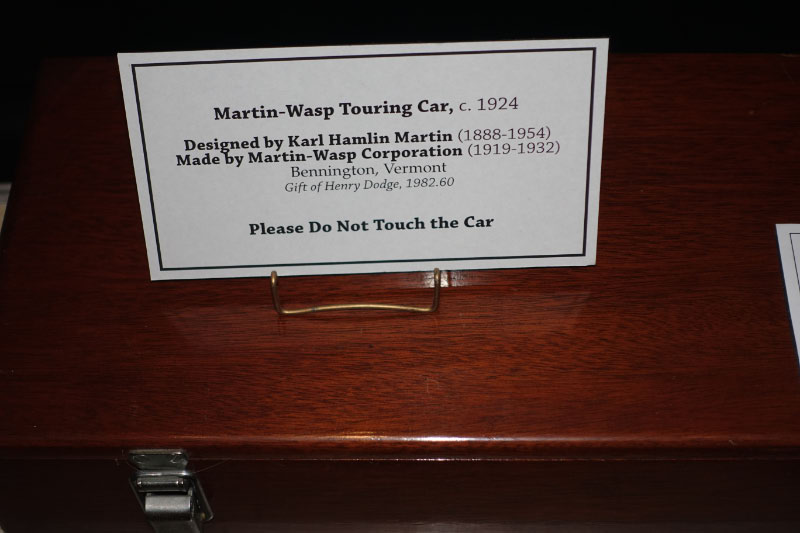
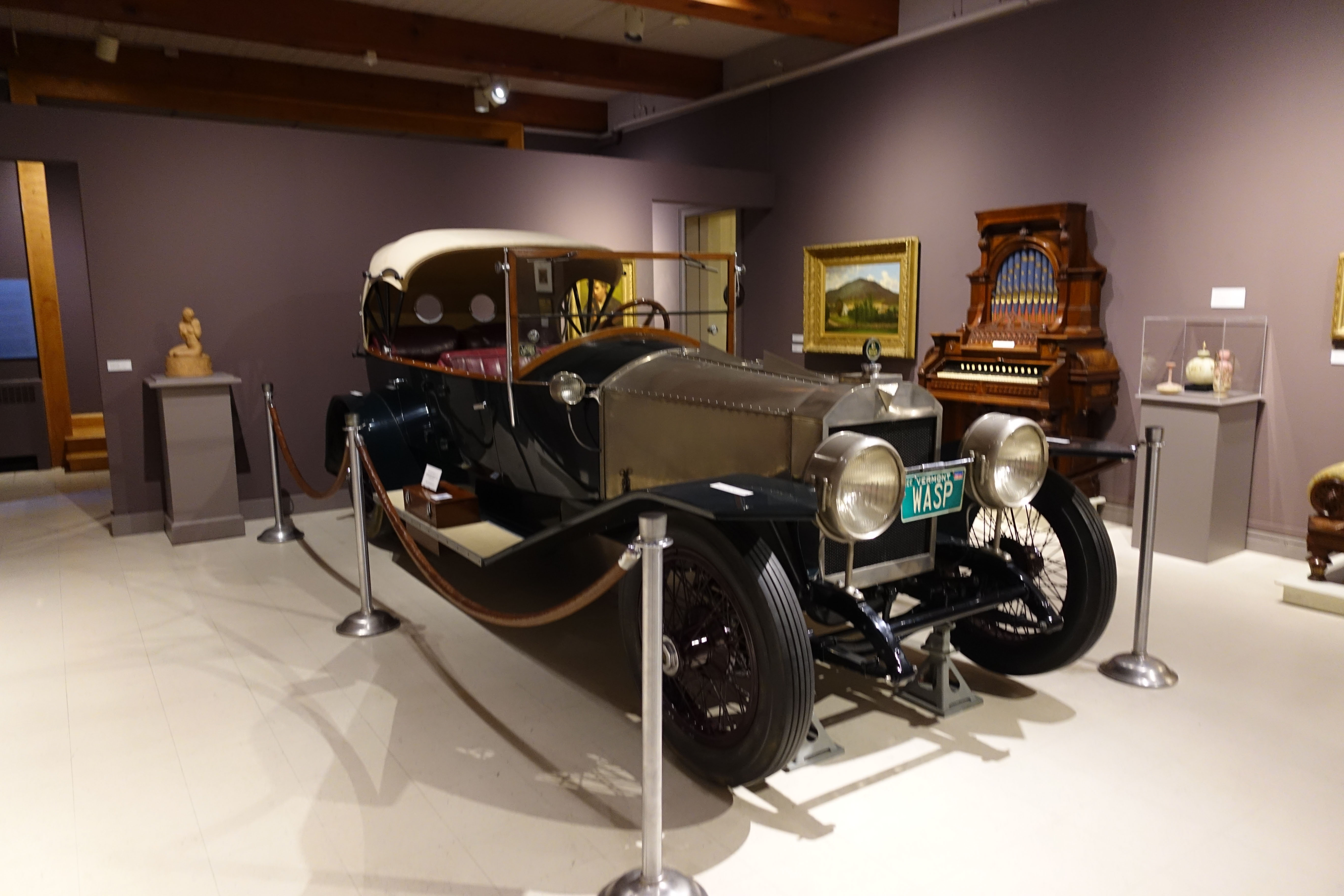
Hammond's Historical Happenings (Submitted by Gary Hammond)
Martin-Wasp records placed on the Bennington Museum website
.
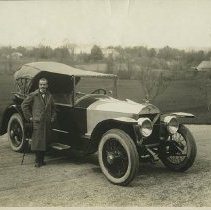
Black and white photograph of three quarter front view of the Wasp. Outdoors, Karl H. Martin standing to the left, leaning against the car. Circa 1920.
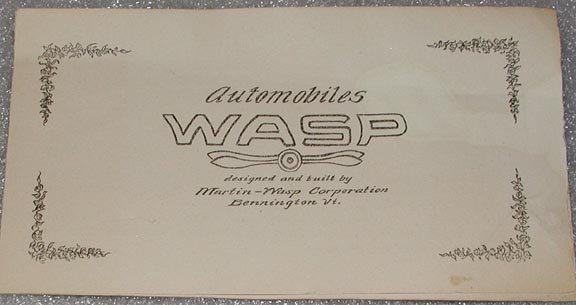
Four page booklet on the Wasp Automobile designed and built by the Martin-Wasp Corporation of Bennington, Vermont. Provides a description of the Wasp Automobile including its chassis, wheel base, gear box, spring, wheels, tires, and coachwork. The coachwork was advertised as custom-built from the designs of Karl H. Martin. Priced at $5000.
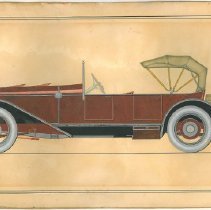
Color drawing of Martin Wasp body style, the Rickshaw Victoria; maroon body, ca. 1920-22; cream paper with decorative black line border.
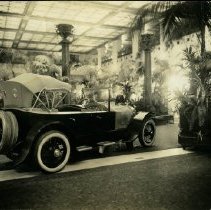
Black and white photograph of three quarter rear view of the Wasp automobile parked inside Hotel Commodore, January 1920. Union Photo Co., NY.
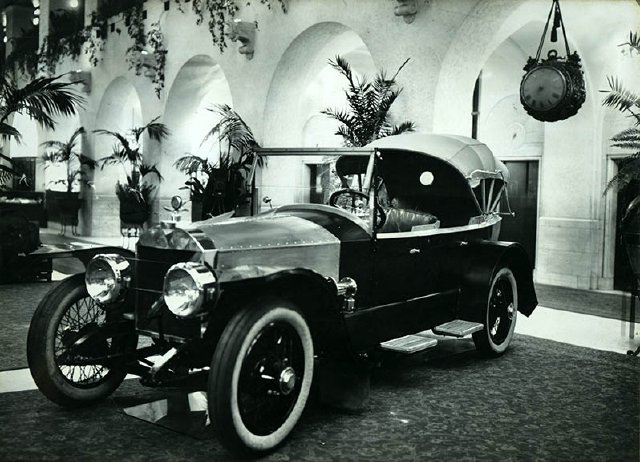
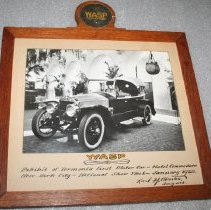
Framed photograph of Wasp with original emblem from hub cap mounted in top of wood frame. Inscription on mat "Exhibit of Vermont's first Motor Car - Hotel Commodore New York Cisty - National Show Week - January 1920. Karl H. Martin, designer." Inscription on back presenting the piece to the Bennington Historical Museum, 1953.
One of six such items framed for each of 6 original stockholders.
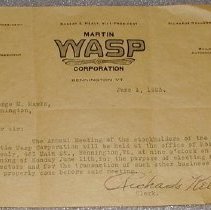
Letter to George M. Hawks of Bennington from Wasp Corporation informing him of the annual stockholders meeting on June 11, 1923. The letter is dated June 1, 1923. Signed by Richard Kellogg. Printed on yellow letterhead. Some folds in the center.
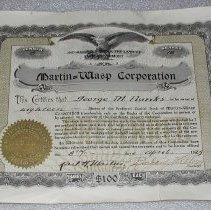
Stock Certificate, belonging to George M. Hawks, dated April 8, 1925. For 18 shares of the Martin-Wasp Corporation. Signed by Richard Kellogg and Karl Martin. Stamped with seal of incorporation, which was in 1919. Two fold lines in center. Shares cost $100 each.
Kleiner's Korner (Submitted by Art Kleiner)
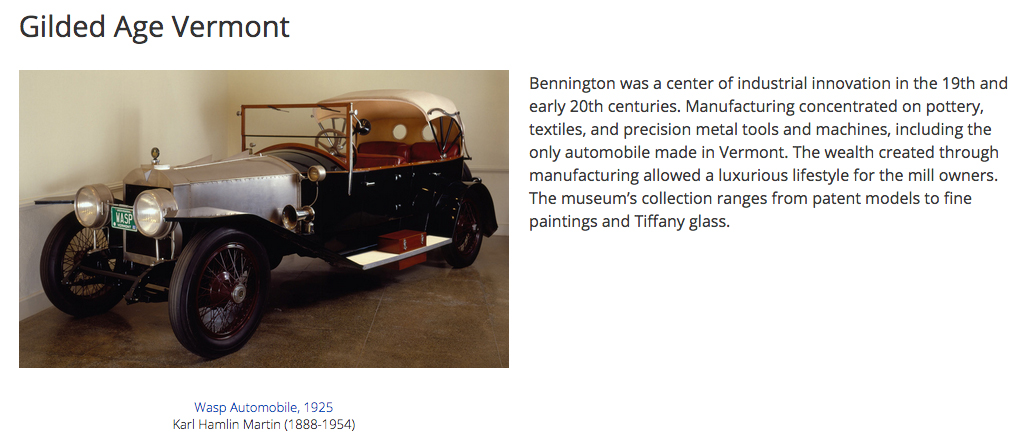

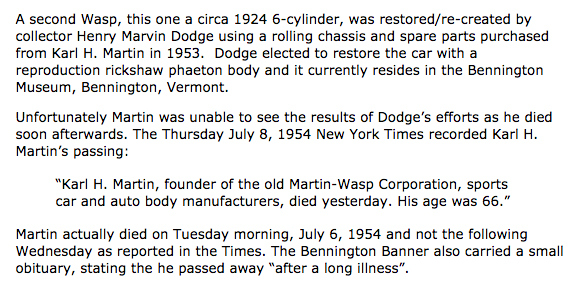
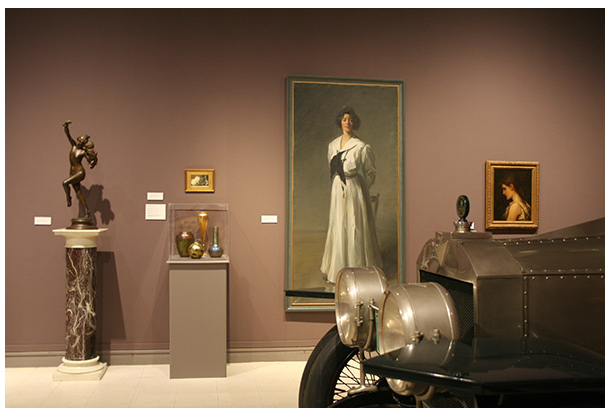
Bennington Museum
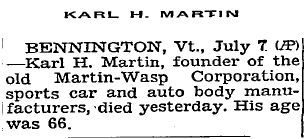
The New York Times, July 8, 1954
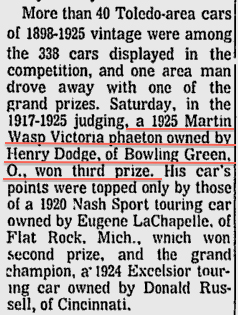
Toledo Blade, September 13,1970
1926 Ford Model T Roadster For Sale
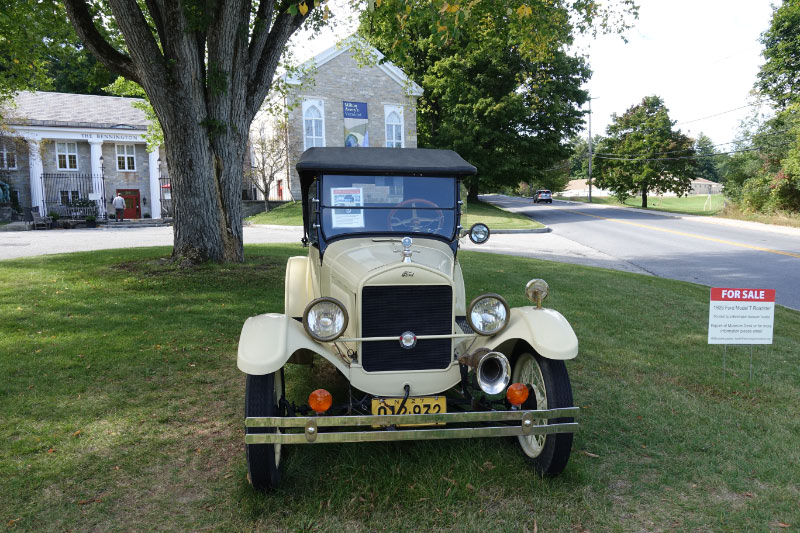
The Bennington Museum is selling this beautiful Ford donated by one of its trustees. For more information contact [email protected] .
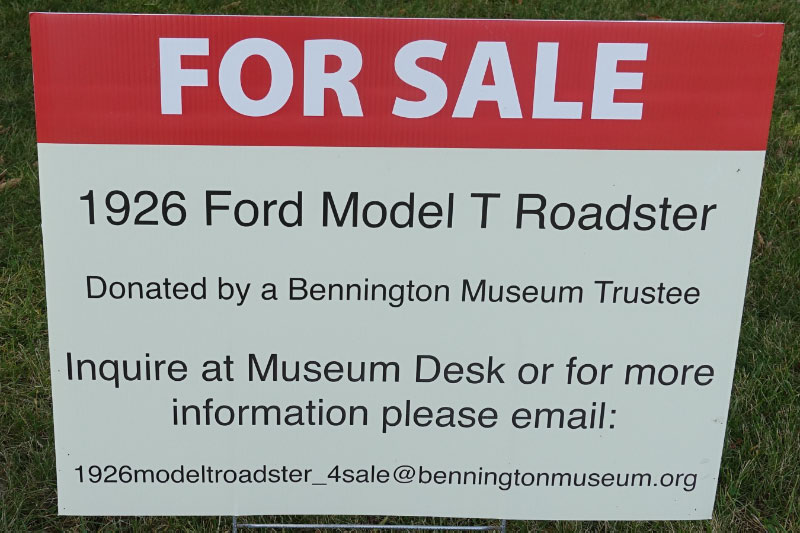

Comments
The car shown is a 1924 Martin Wasp on display at the Bennington Museum in Vermont. Douglas Fairbanks, Sr. was the celebrity who purchased one of these after viewing one in an auto show in NYC around 1920.
Could not find who the owner of this one was.
Wow Howard,one thing I know is that you should have this car.I think it tops the Chryslers Chrysler,even though it’s not one of one.The mystery is why don’t you have it or get it? What a beauty,a show pleaser and winner.
As an addendum to my earlier answer I have now found who owned the Martin Wasp on display at the Bennington museum in Vermont.
It was the collector, Henry Marvin Dodge.
Identify the touring car
-1924 Martin-Wasp Touring car
Who owned this automobile?
-The 1924 6-cylinder, was restored/re-created by collector Henry Marvin Dodge using a rolling chassis and spare parts purchased from Karl H. Martin in 1953.
Name the Hollywood star who purchased one of the 12 touring cars for $5,500?
-Douglas Fairbanks Sr.
Where is this automobile located today?
-Benington Museum in Benington Vermont
Identify the touring car: 1925 Martin Wasp
Who owned this automobile?: Henry Dodge
Name the Hollywood star who purchased one of the 12 touring cars for $5,500?: Douglas Fairbanks, Sr.
Where is this automobile located today? Bennington, VT. Musuem
Mystery car is a Martin Wasp, built in Bennington, Vt. and housed in the Bennington Museum. This car is the rare 6 cylinder model from 1922 and may have been owned by the builder Karl Martin. Douglas Fairbanks bought one for his wife Mary Pickford . Best wishes, Bob
From Gary Hammond:
Hi Howard,
I remember first seeing this car about 30 years ago up at the Bennington Museum, Bennington, VT. I was surprised to see it there amongst the museum’s great collections of pottery and Grandma Moses paintings. Buried somewhere here at home, I have a slide or two that I took of it that day. It’s a WASP, built in 1925. It was a gift to the museum by Henry Dodge in 1982. The star who bought a car was Douglas Fairbanks Sr.
Here’s the information provided on their website:
“It was designed and built by Karl Hamlin Martin (1888-1954) of Bennington, Vermont. Model is Series B, body style, Rickshaw Victoria, vehicle identification #1. Dark green body, off-white canvas top, chrome hood, red leather upholstery.
Karl Martin realized an ambition of long standing when he produced the first Wasp touring car. Even while serving in the Naval Aviation Department during World War I, Martin pursued automotive design work and after his discharge from the Navy in 1919, he moved to Bennington where he began construction of the first group of six cars.
The first Wasp, barely completed in time of National Automobile Week in New York, was exhibited at the Commodore Hotel in January, 1920. It was received by the public with enthusiasm for its startling and unusual design and fine craftsmanship. Douglas Fairbanks Sr., upon seeing the car, bought one on the spot.
Spectacular in appearance, the Wasp was constructed of the finest materials and components available. A Wisconsin T head engine, such as powered the Stutz with a Bosch ignition, powered the car. A chrome nickel, heat treated frame on Timkin axles combined with Rudge Whitworth wire wheels gave the car strength, stability and speed. For the 1924 season a Continental six-cylinder engine of greater power was combined with a four speed transmission with overdrive which, on the fourth Speed, gave the car quietness and smoothness at even higher speeds. The coachwork was crafted in Bennington under the careful, direct supervision of Karl Martin.
As a result of monetary problems and slow sales due to a post war business slump, the company failed and the last Wasp, now displayed in The Bennington Museum, was produced in 1925. Although the company lingered on, producing custom woodwork and special castings, its doors closed permanently in 1932, a sad end to Vermont’s first true automobile manufacturing company, the total production of which was only 16 cars. While only a small number when compared to the giants of the industry, it is quite creditable considering that many companies at the time produced only one or two cars.”
The museum’s website also shows the front and back of a stock certificate for the company, and mentions a brochure/booklet which is also in their archives that was issued by the company in 1920 promoting the car. Also the museum’s collection includes some correspondence, five original color drawings of the car (I copied only one), unfinished headlights, and photos.
Two comments that I have that differs from your statement is that according to the museum the cars cost $5,000, not $5,500, and 16 cars were produced, not 12. So which is right?
See the many attachments!!!!
Gary
Seeing the original pic that accompanied the link, my initial reaction was, “Doesn’t EVERYONE keep their tourer in their living room?” Sam, III
Another absolutely stunning car. I’d never heard of WASP, but love what I see. I do wonder if any others still exist.
The Bennington connection of the Wasp goes back to Bennington’s founding family. The designer of the Wasp, Karl Hamlen Martin (1888-1954), was married to Elizabeth Jennings (1895-1970) and whom are both buried in Bennington’s Village Cemetery. Elizabeth Jennings Martin was the daughter of businessman, Philip Burton Jennings (1865-1949)
and Edith Trumbull (Robinson) Jennings (1869-1900) whom are buried at the Old First Church Cemetery in Bennington. Philip B. Jennings was the son of, Rev. Isaac Jennings (1817-87), pastor of the Old First Church for 35 years and author of the history on Bennington, “Memorials of a Century (1761-1861).” Edith Robinson Jennings was the great-great granddaughter of Vermont Senator, Jonathan Robinson (1756-1819), son of Bennington’s founder, Capt. Samuel Robinson (1707-67), whom was also the first magistrate appointed in 1761 within the boundaries of what would later become the great state of Vermont in 1791.
Best,
Doug Robinson
My grandfather Henry Dodge donated this beauty to the Bennington Museum where it belongs. If you’d ever like more info on how he found it, rebuilt it, and later donated it - drop me an email and I’m happy to share. It’s an interesting story. David